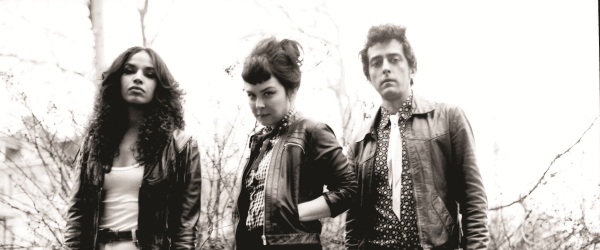Videos by American Songwriter
There’s something in Jem Cohen’s voice that we just can’t seem to put our finger on. It’s a vibe halfway between total excitement and total relaxation, the median between mischievous and mystical. But then again, his band The Ettes has just gotten back to Nashville after a week of desert hijinks in Joshua Tree, California. It was their first group vacation after eight years of touring and cutting albums like 2011’s critically lauded Wicked Will.
“We’re thinking about doing our next record there. It’s magical, the vibe there is amazing,” says Cohen.
“Coco stayed in the Gram Parsons room at the Joshua Tree Inn and we went swimming in the pool and totally saw his ghost. His spirit appeared in the form of a shark.”
But we’re not here to talk about shark-ghosts or GP’s lodgings – we’re here to talk gear – and Cohen’s tone shifts all the way into “totally excited” mode. The Ettes have crafted a dynamic, distinct sound that swaggers its way between snarling, sexy and psychedelic. At the heart of the sound is singer/guitarist Coco Hames’ Jay Turser LT Series Telecaster-style guitar.
“She’s been using that since day one for all of our recordings,” says Cohen. “I just got a Vox Astro 4 1967 bass and it’s the best bass ever. It’s got a built in Fuzzface – in the bass itself! – and a treble-bass boost that, when you go treble on it, sounds like baritone guitar. And when you go bass on, it’s just this crazy sub craziness.”
In the studio The Ettes are augmented by the classic British short-scale Burns Nu Sonic bass, a Danelectro baritone guitar and a ‘63 Guild acoustic passed down from Cohen’s father.
But cool guitars alone can’t get the cool tones you’ll hear on stage and on record from The Ettes. On the road Hames uses a Sears Silvertone 1484 2×12” “piggy back” amp that was originally her father’s and despite its press-board construction has managed to survive eight years of touring without a roadcase. In the studio she use a Selmer amp – the brand best known for perpetually nipping at Vox’s heels in the ‘60s – that is covered in crocodile skin and has a light that syncs with the pace of the on-board tremelo.
Cohen, also a Sears Catalog subscriber, used a Silvertone 1483 1×15 bass amp before upgrading to a Fender Bass 100 with an Ampeg 4×10 cabinet on the road and a Vox AC30 – better known for its applications as a guitar amp – while in the studio.
“I retired that [Silvertone] a bit ago because it just wasn’t loud enough, it’s mostly for the studio now,” says Cohen. “But I love my Bassman 100, it’s got a super awesome tone. It’s from ’71 … it’s a really simple head, not much going on, just a massive transistor and a few tubes.”
To top it off – to get that extra layer fuzz and scuzz that’s requisite for genre and then kick it up a notch or eight – Hames uses the Dunlop Fuzz Face pedal. Cohen doubles down on the fuzz by combining his Astro 4’s built-in distortion with his own Dunlop Fuzz Face, an Electro-Harmonix Micro POG Polyphonic Octave Generator and the Electro-Harmonix Holy Stain.
“Everyone’s afraid of them because they have so many options,” says Cohen. “I use it for mainly for tremelo. You can’t really hear it but you can feel it – more of a vibe-y thing than an audible thing.”







Leave a Reply
Only members can comment. Become a member. Already a member? Log in.